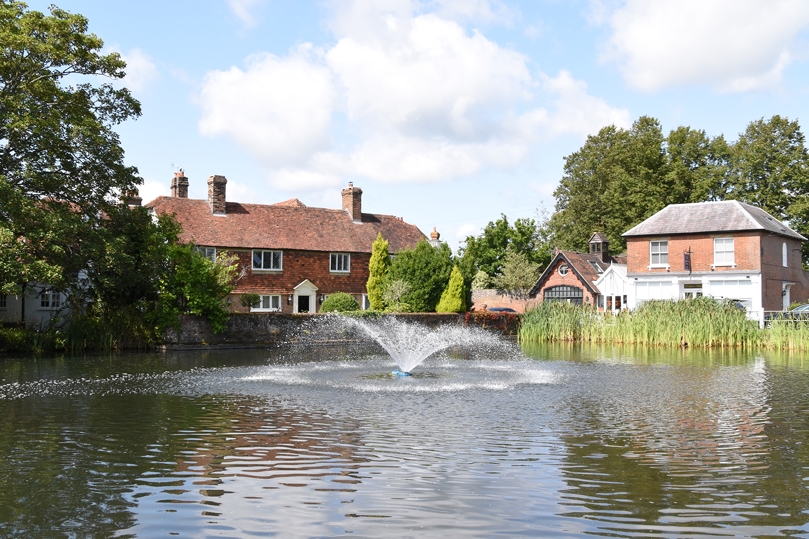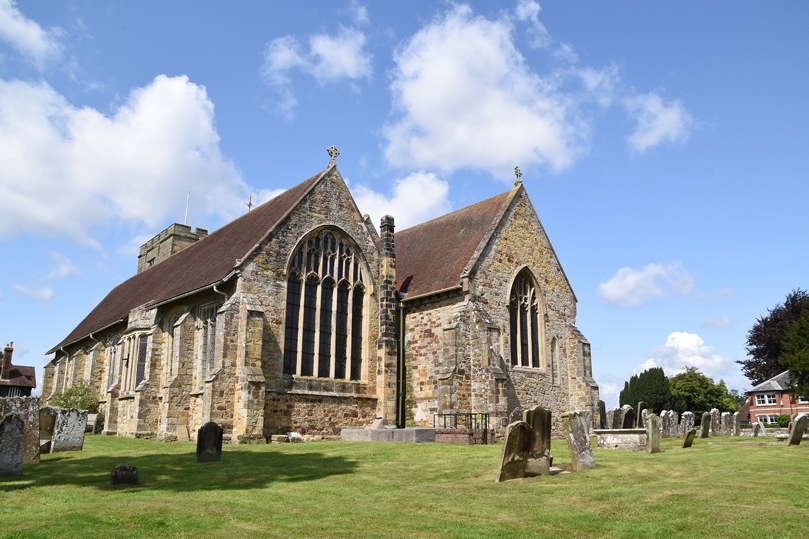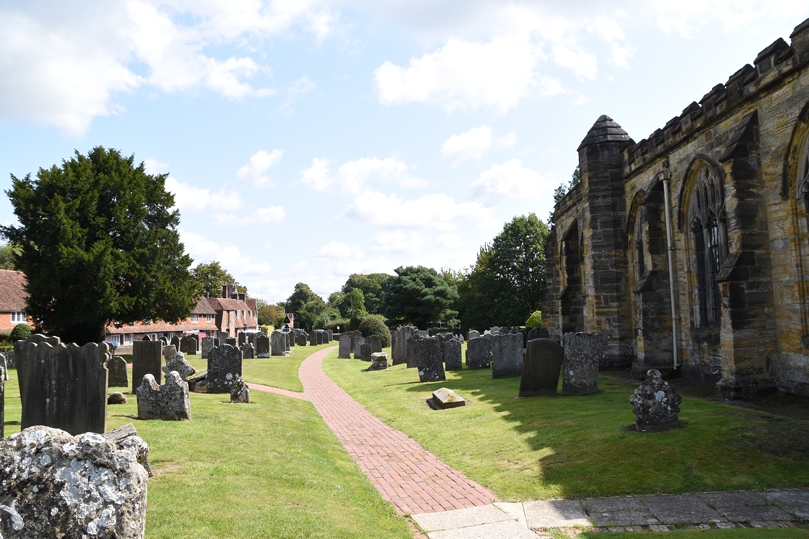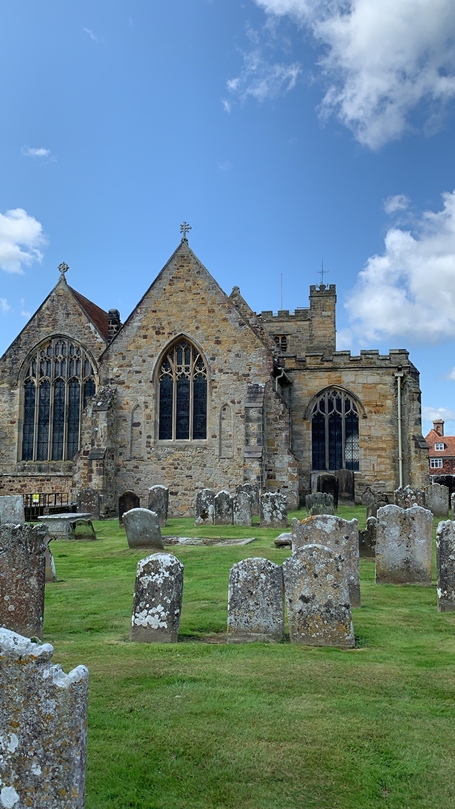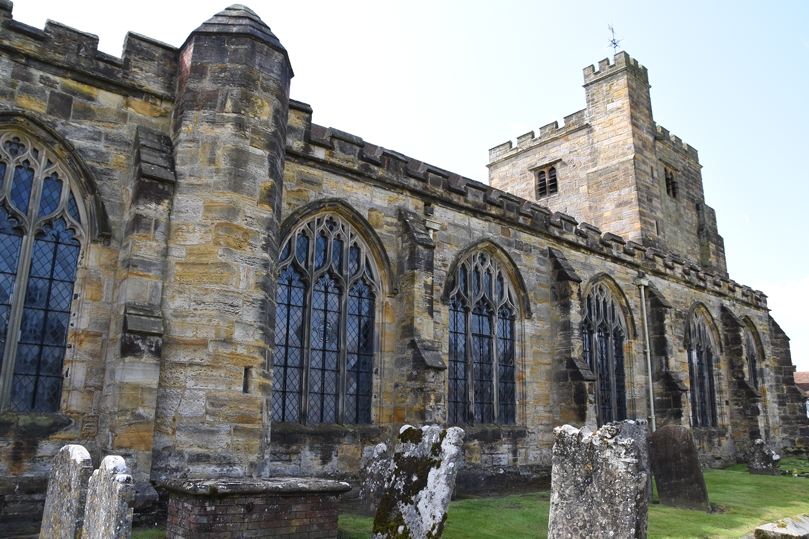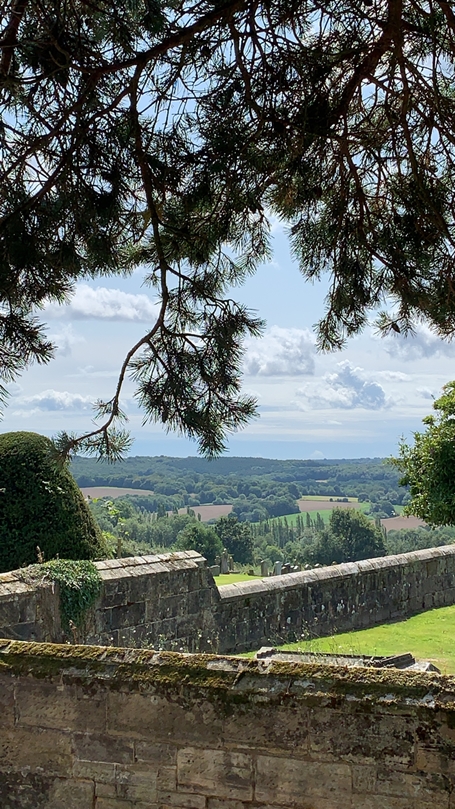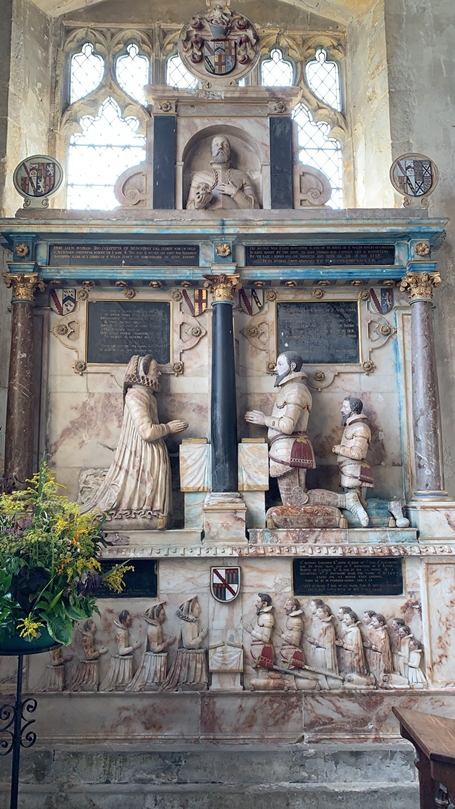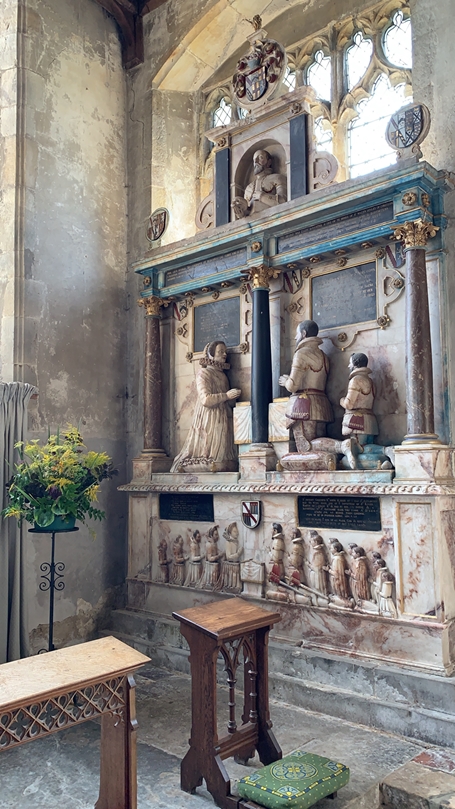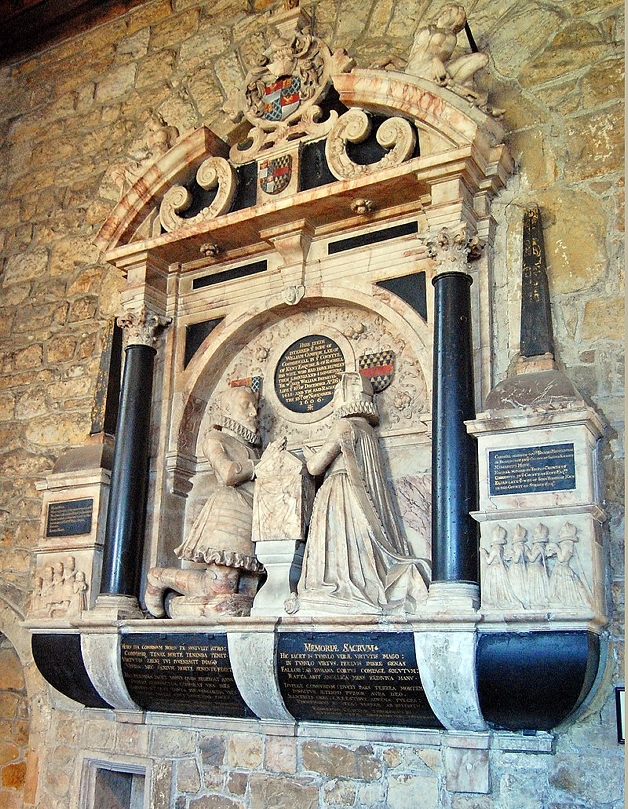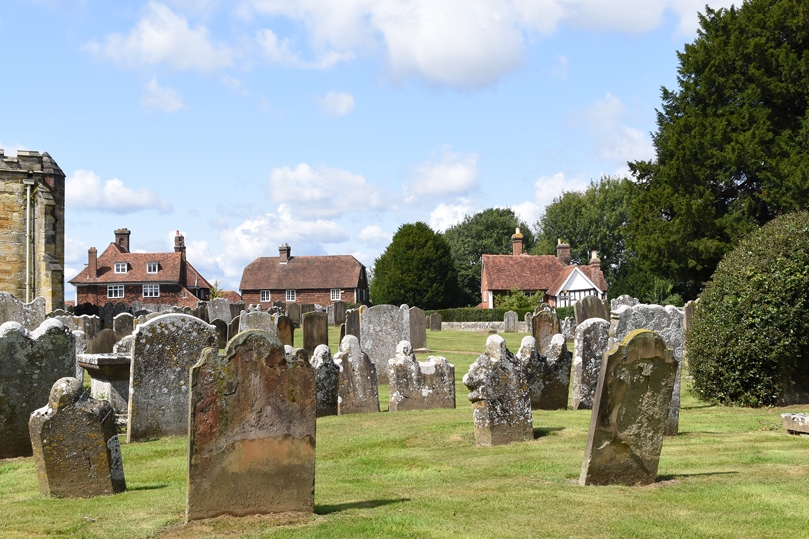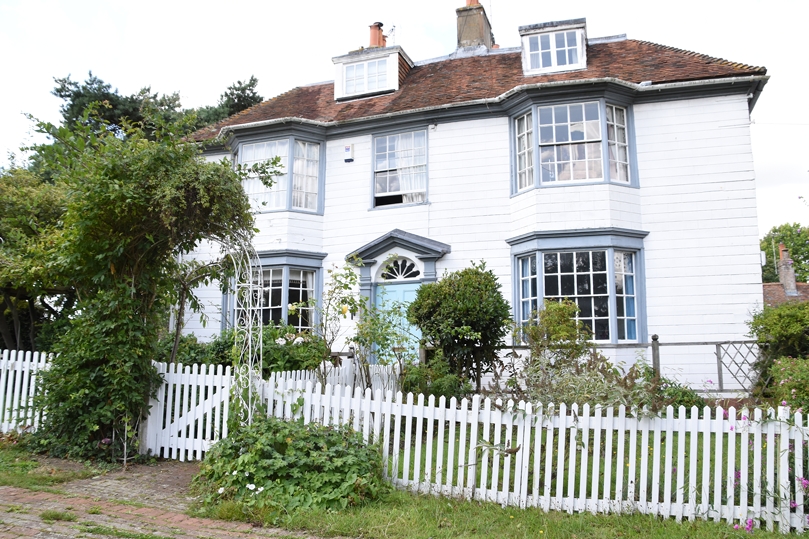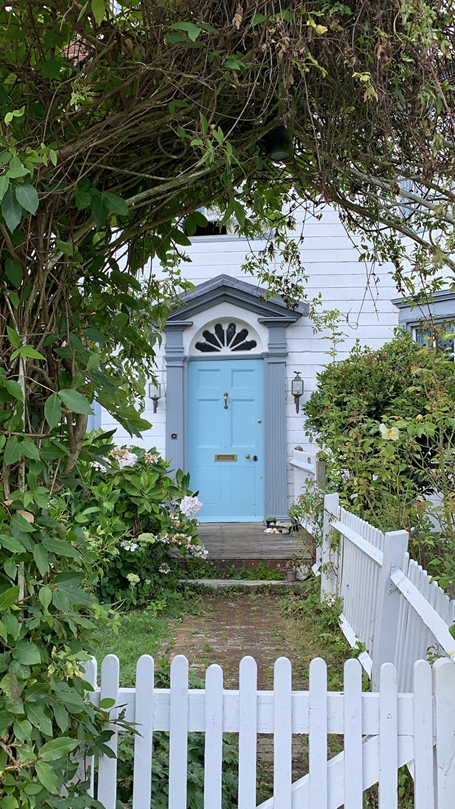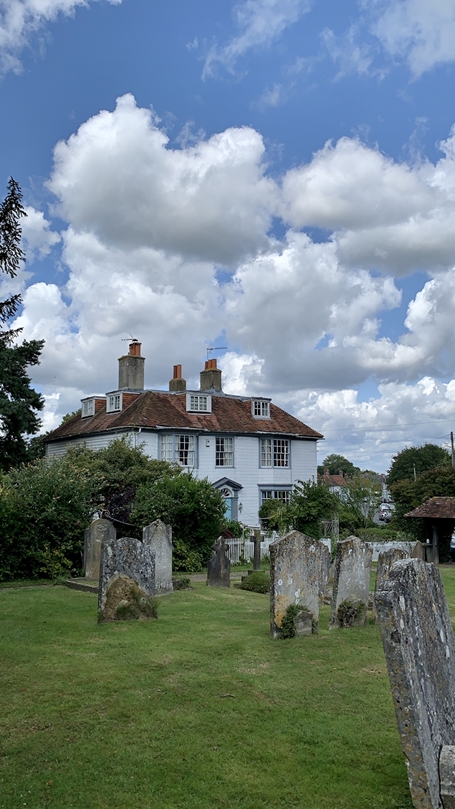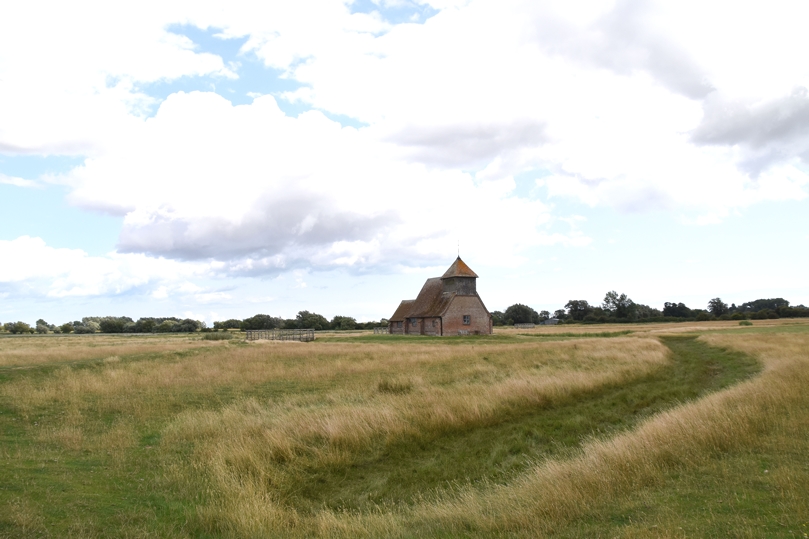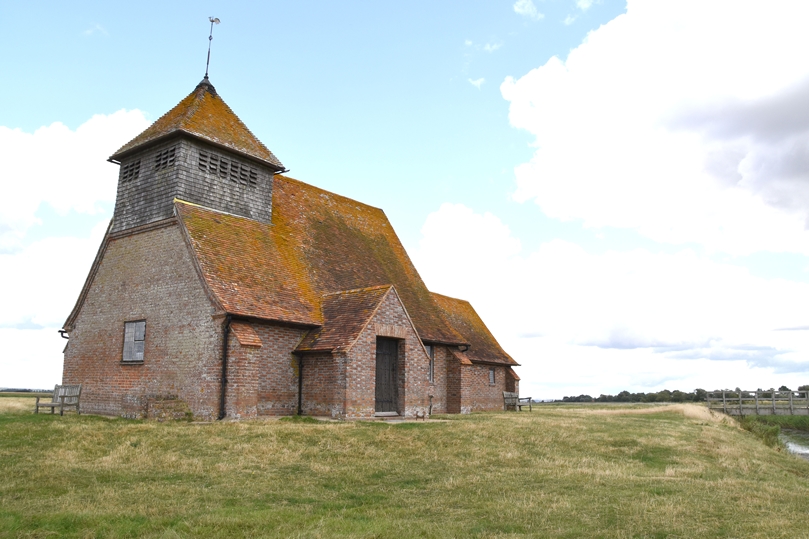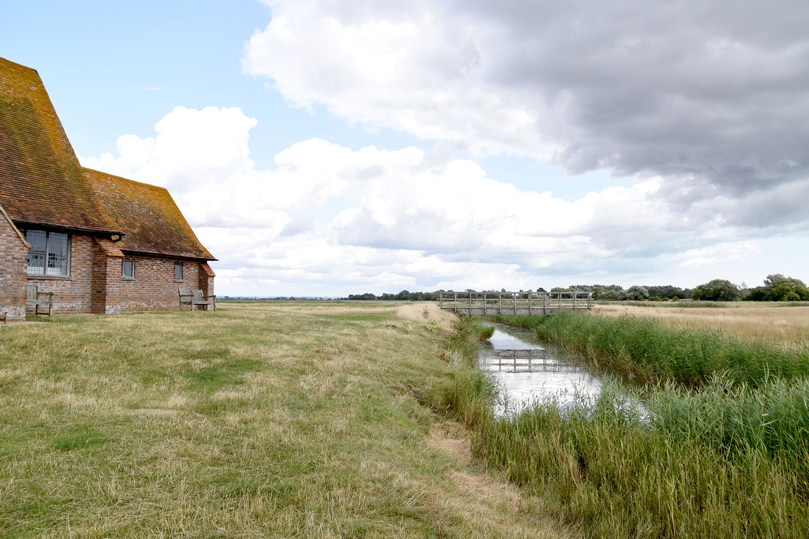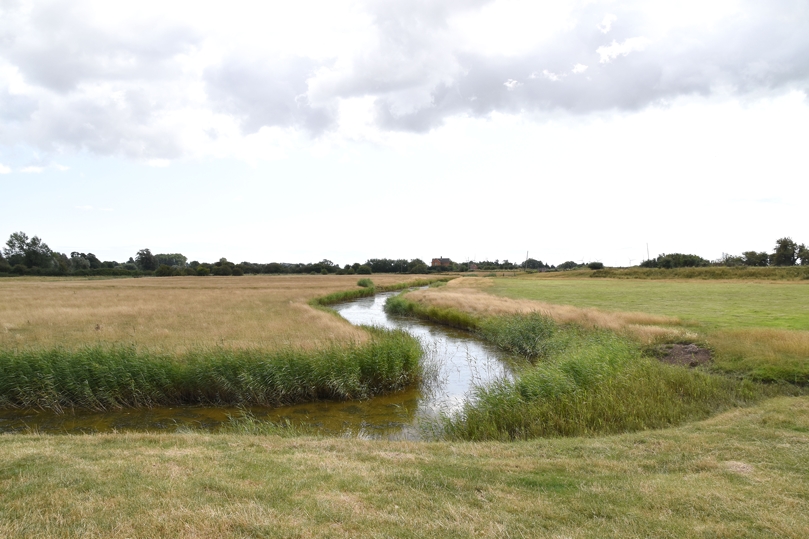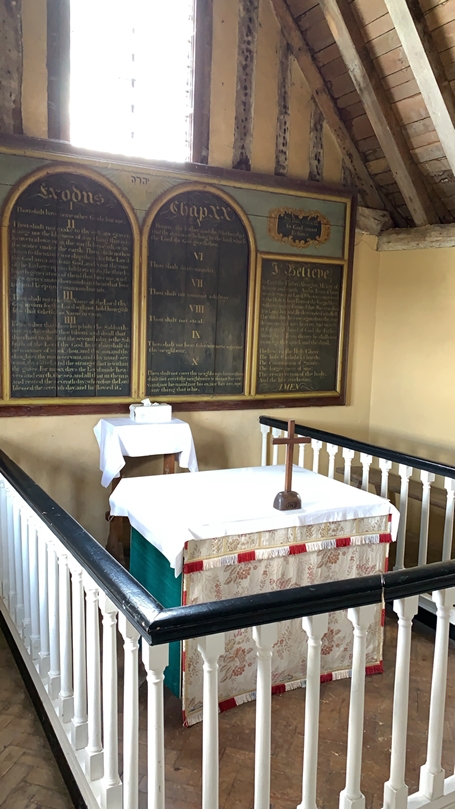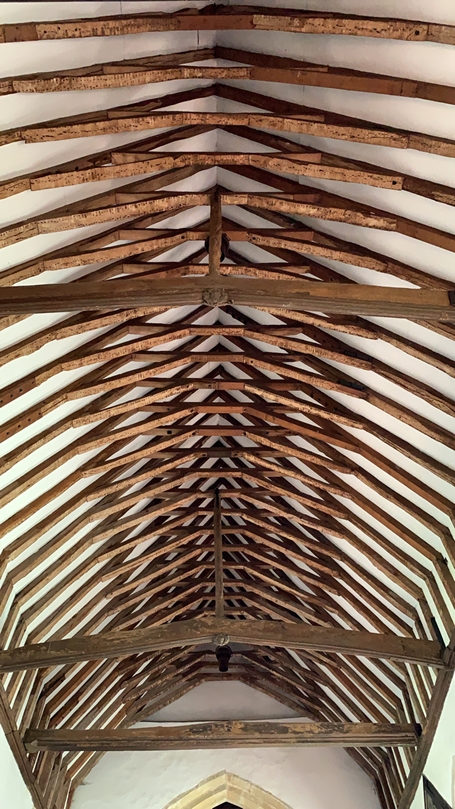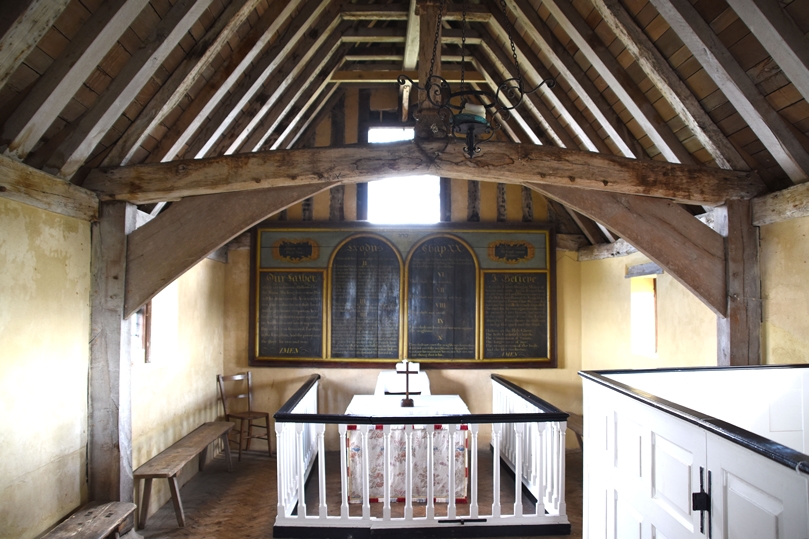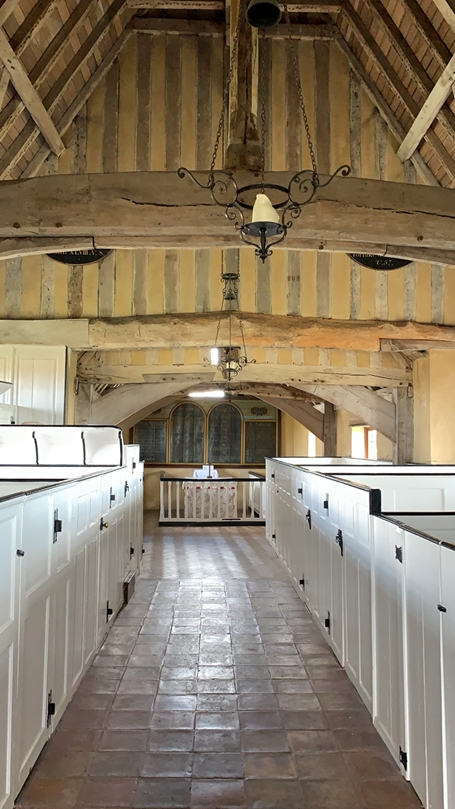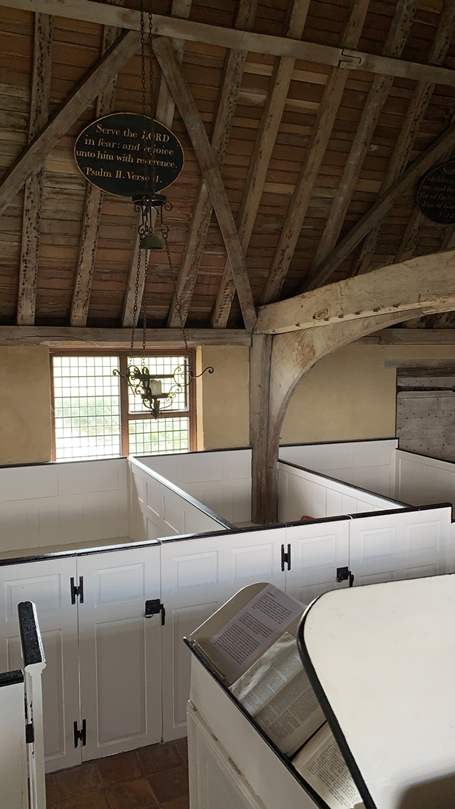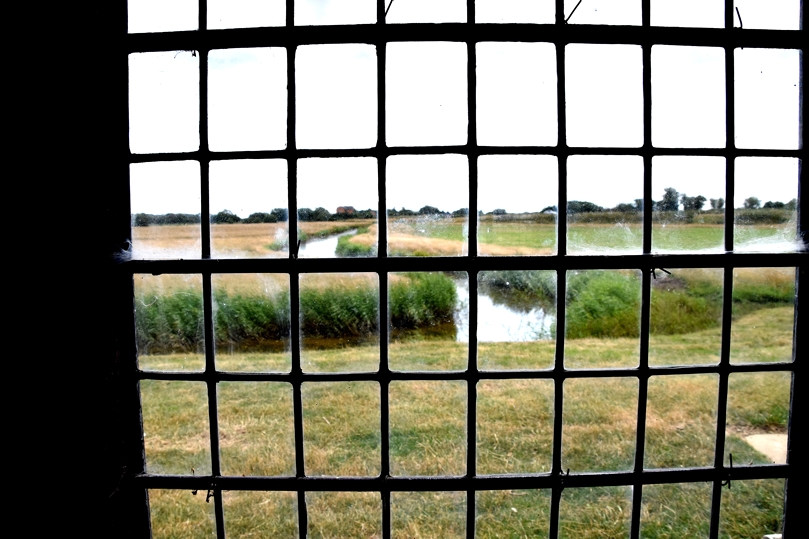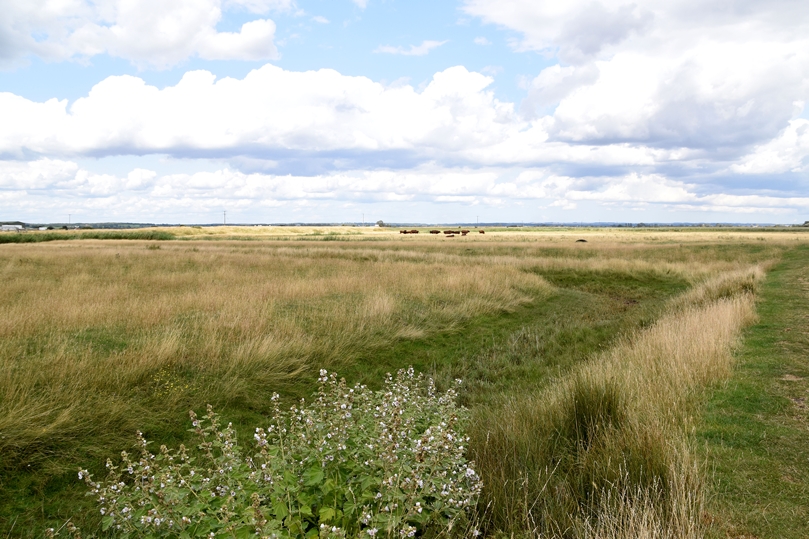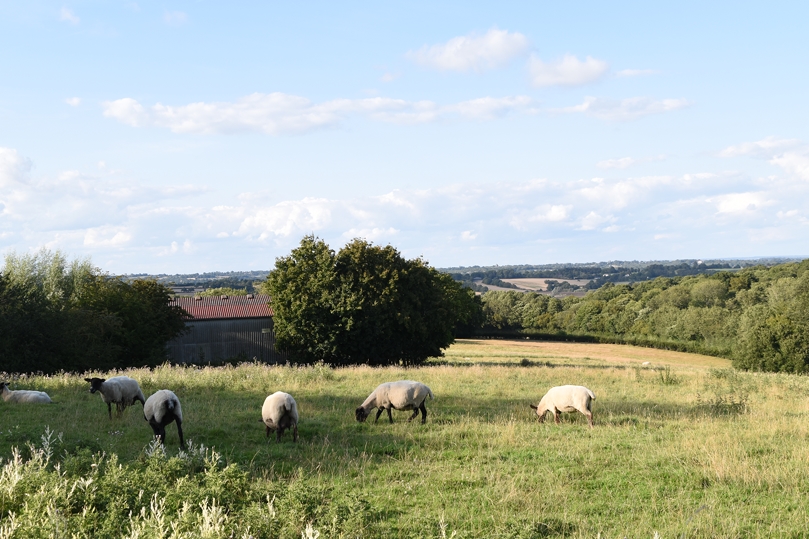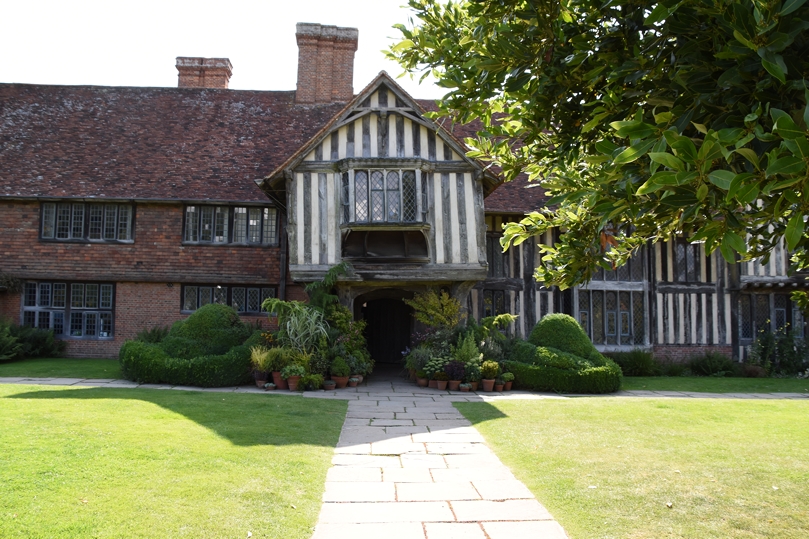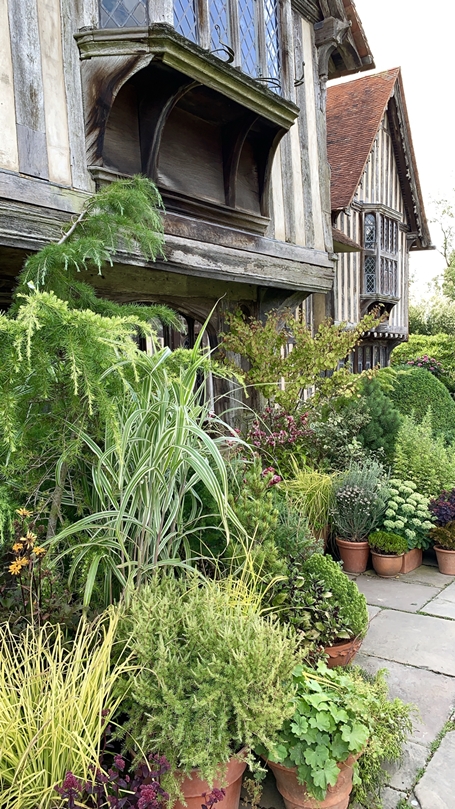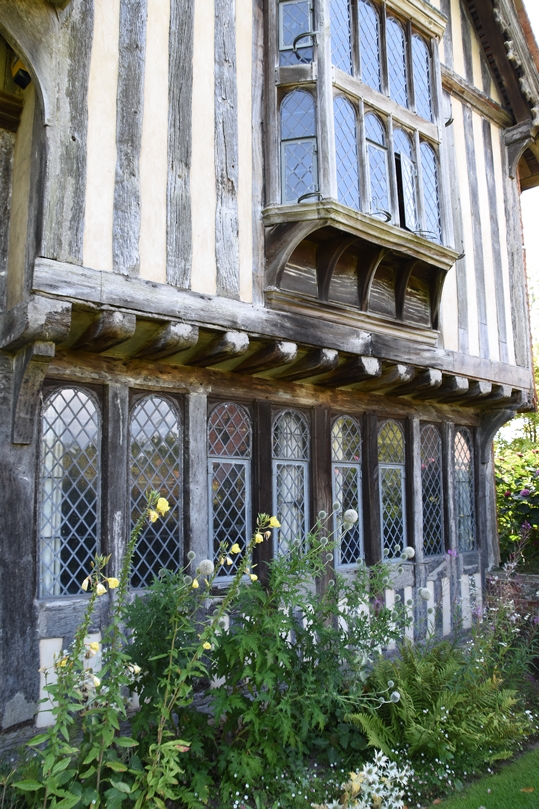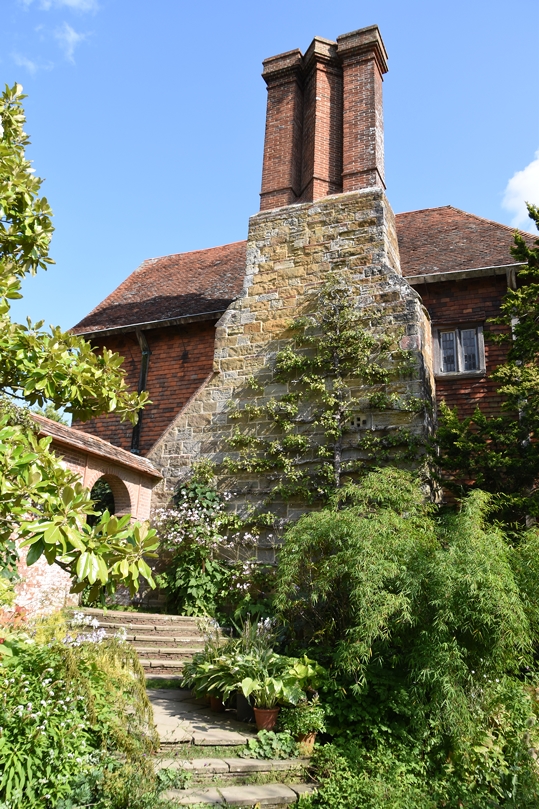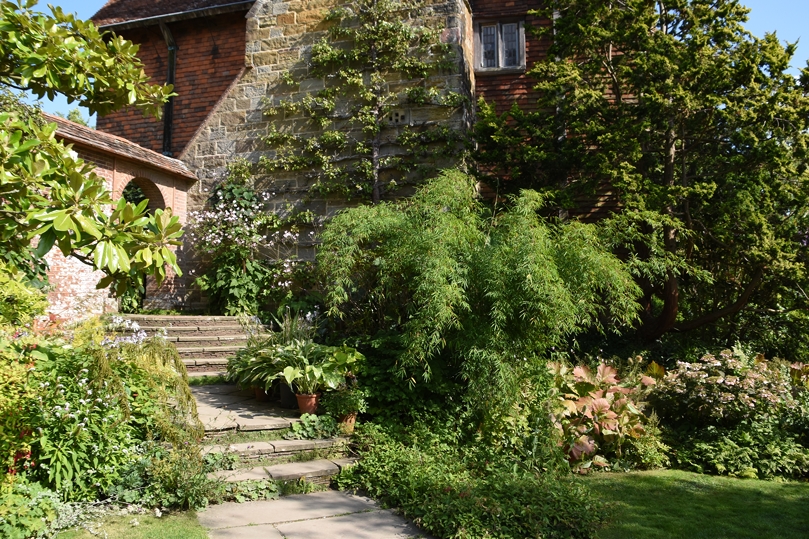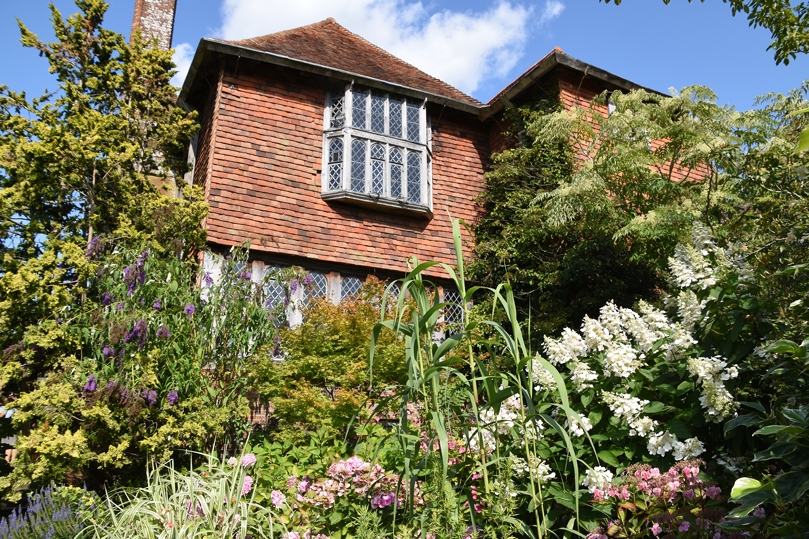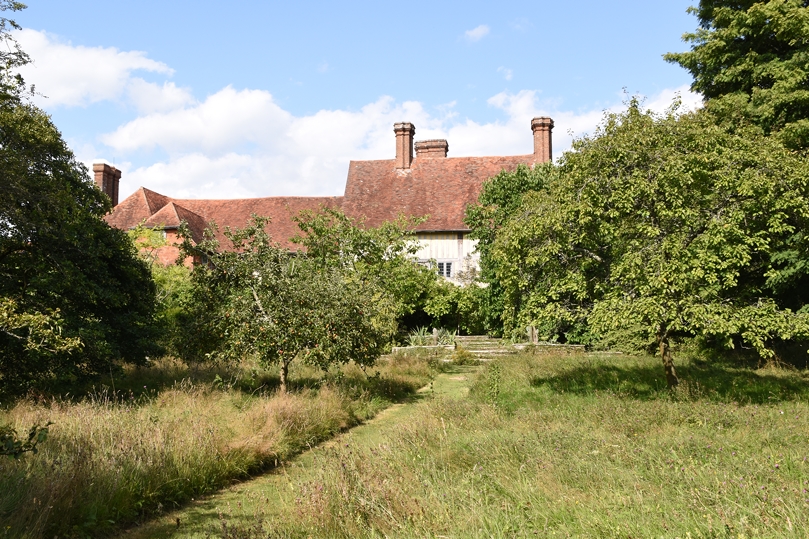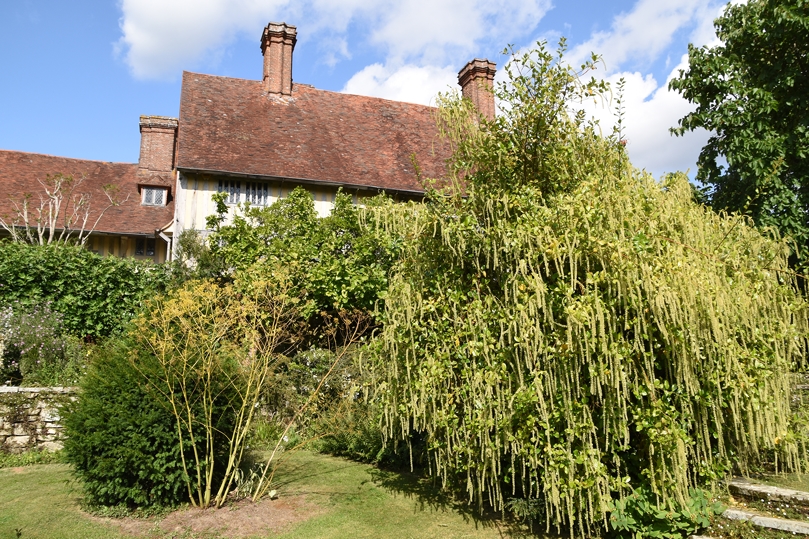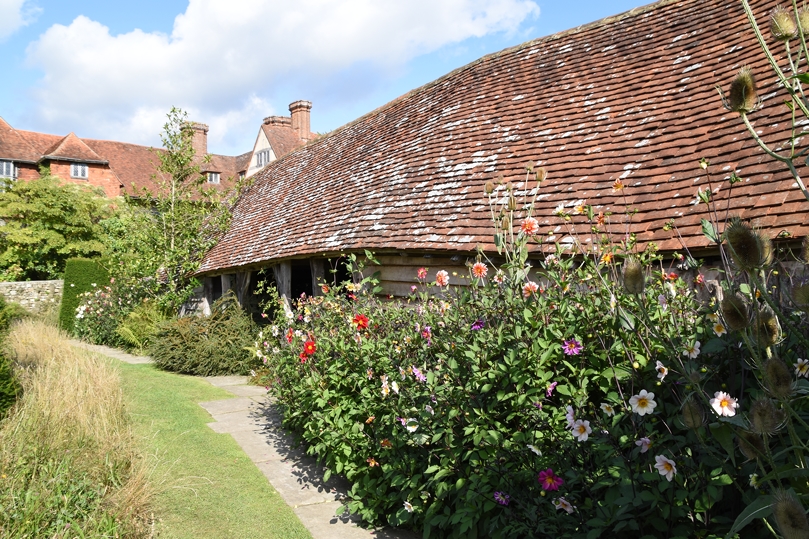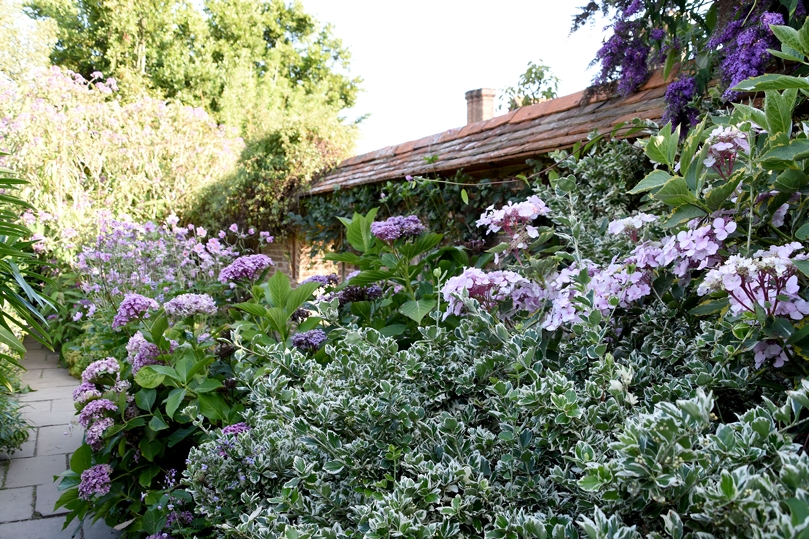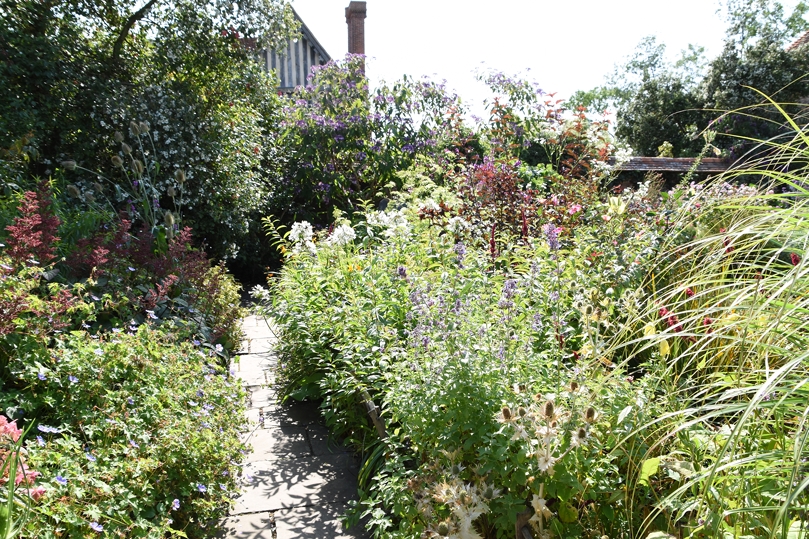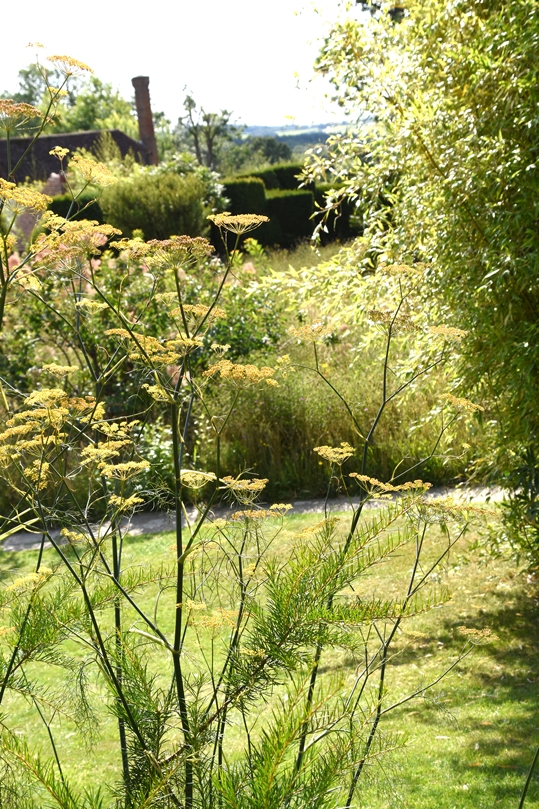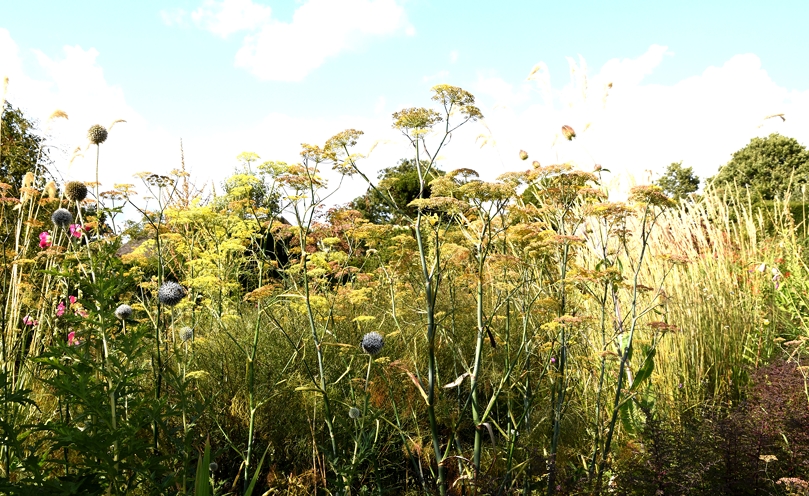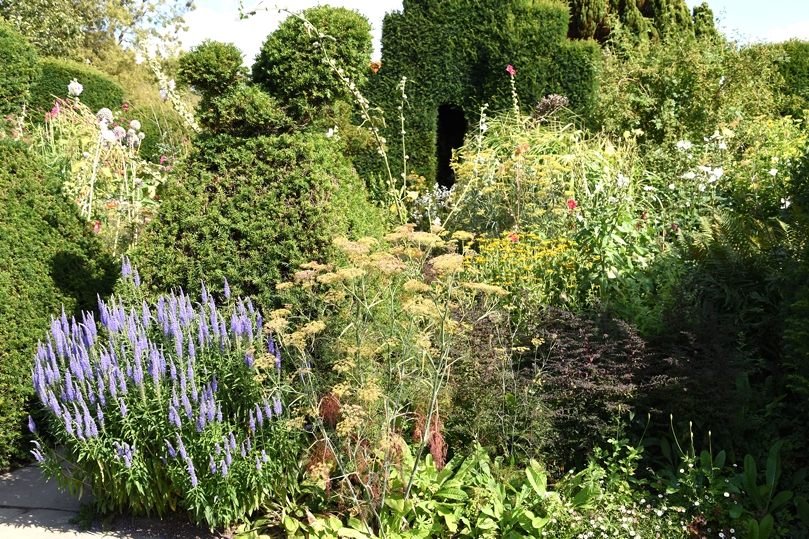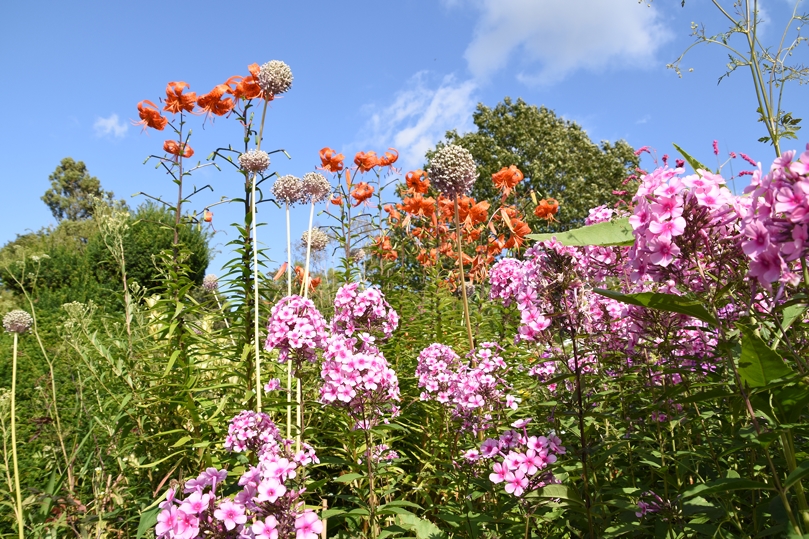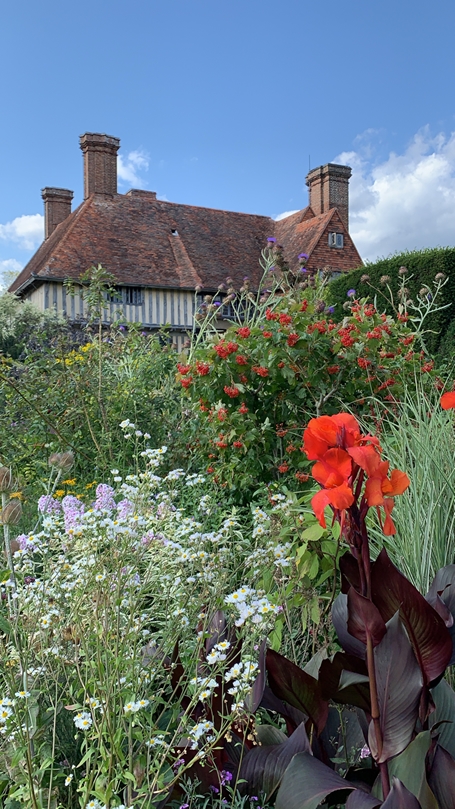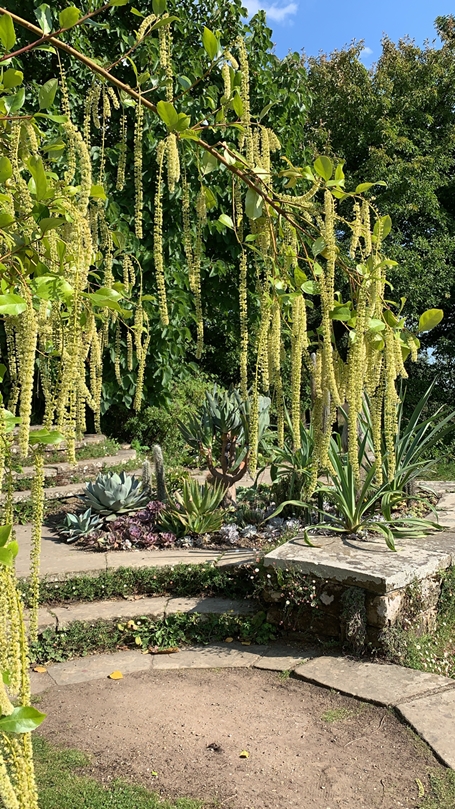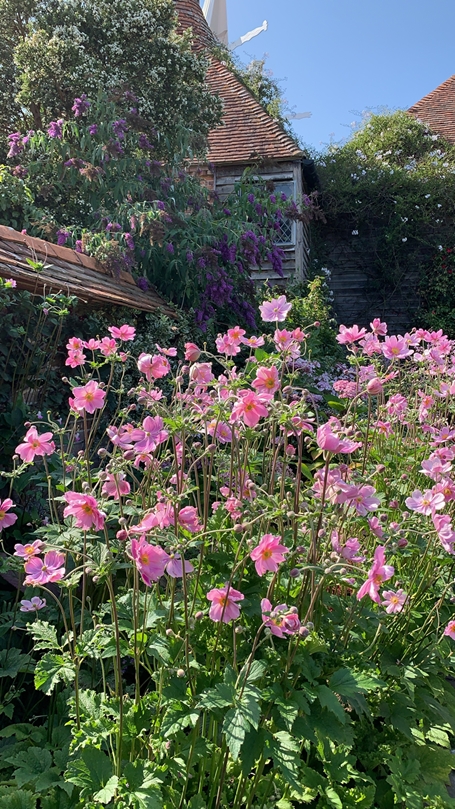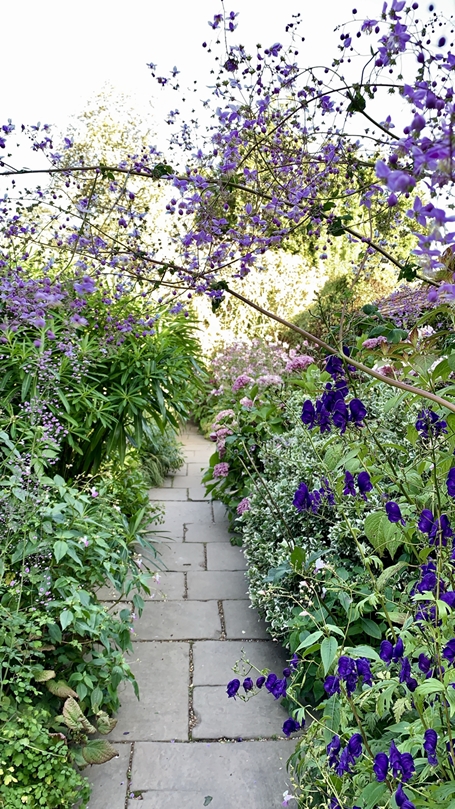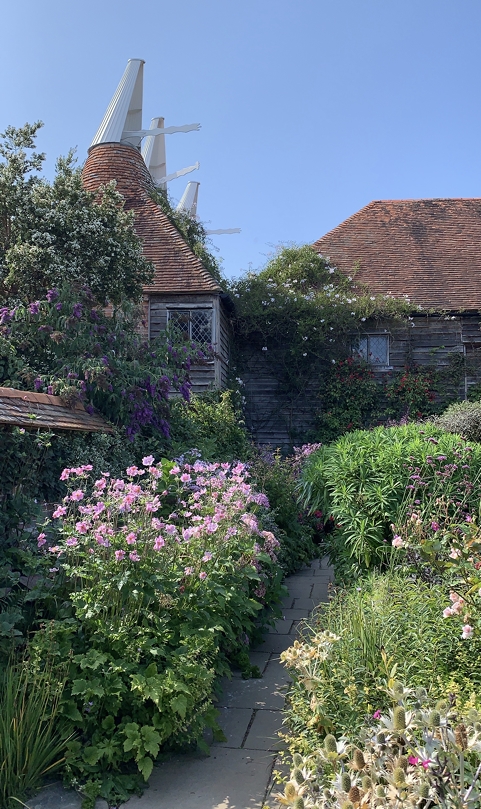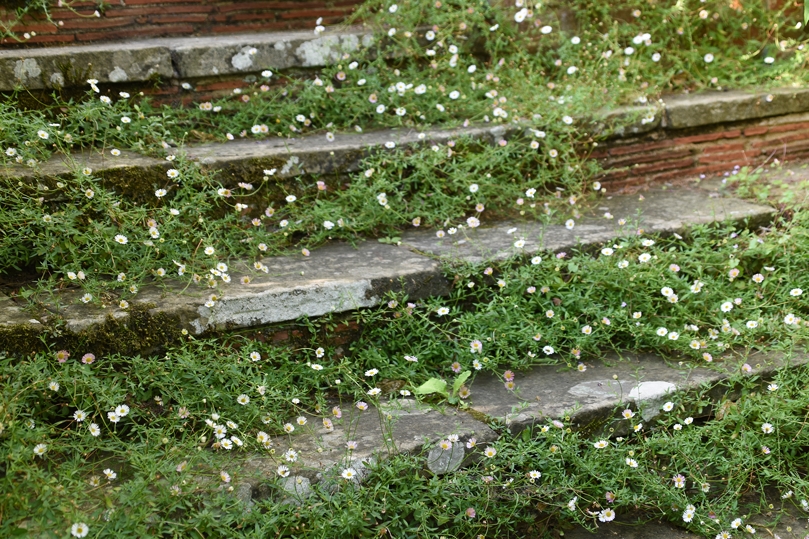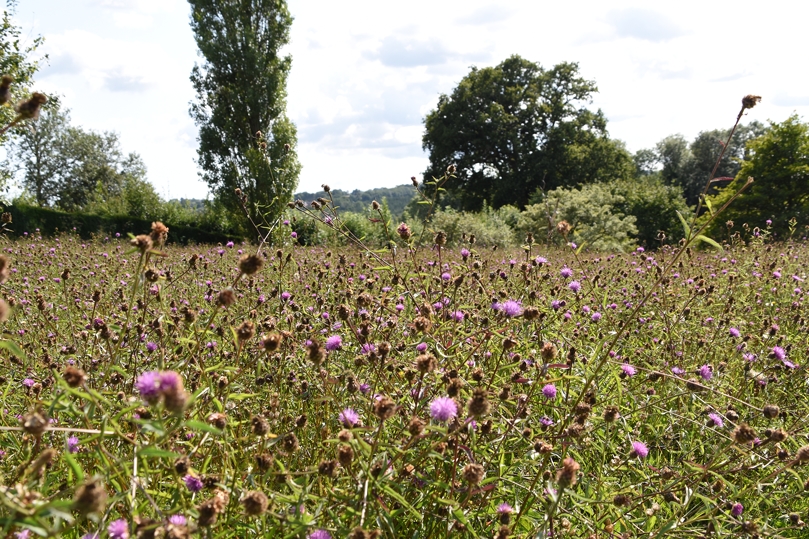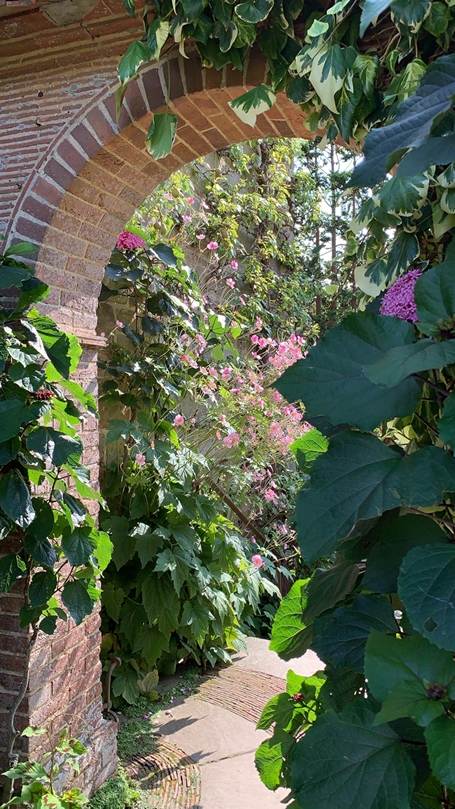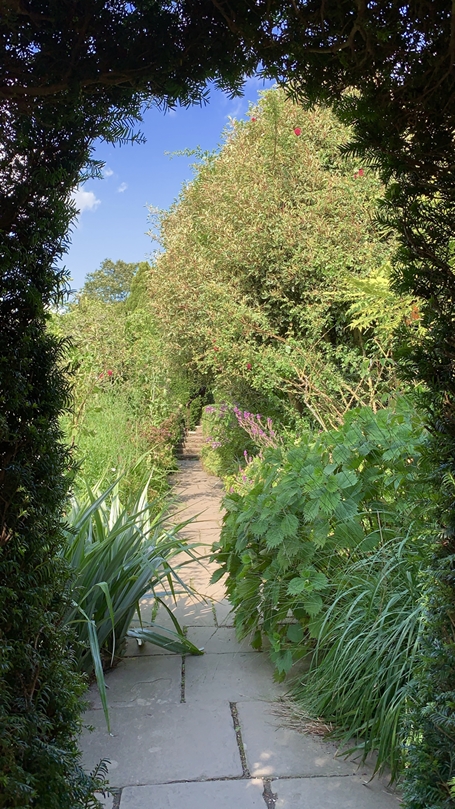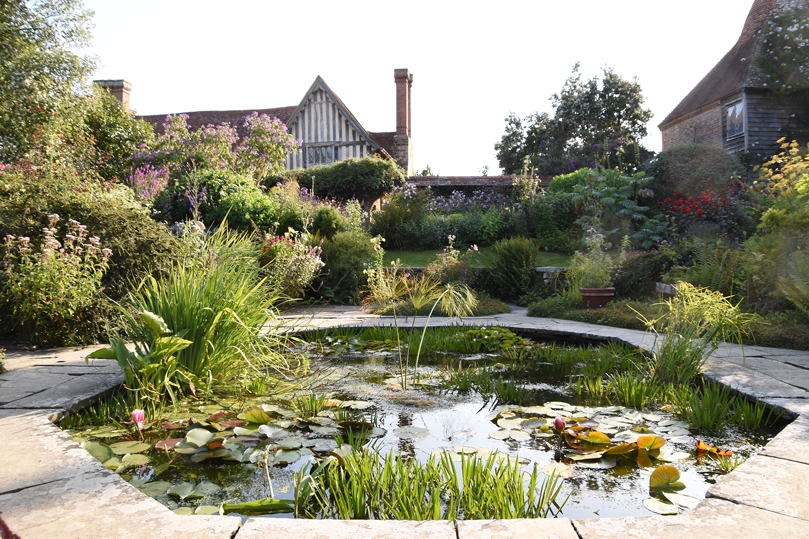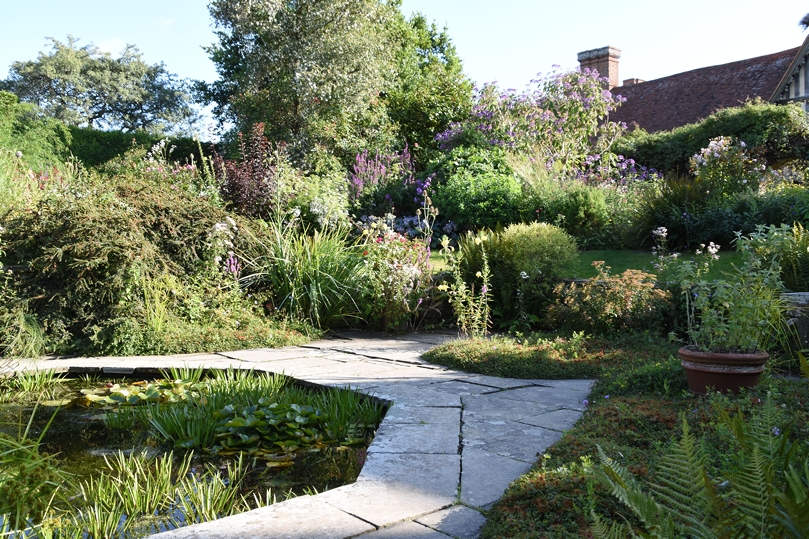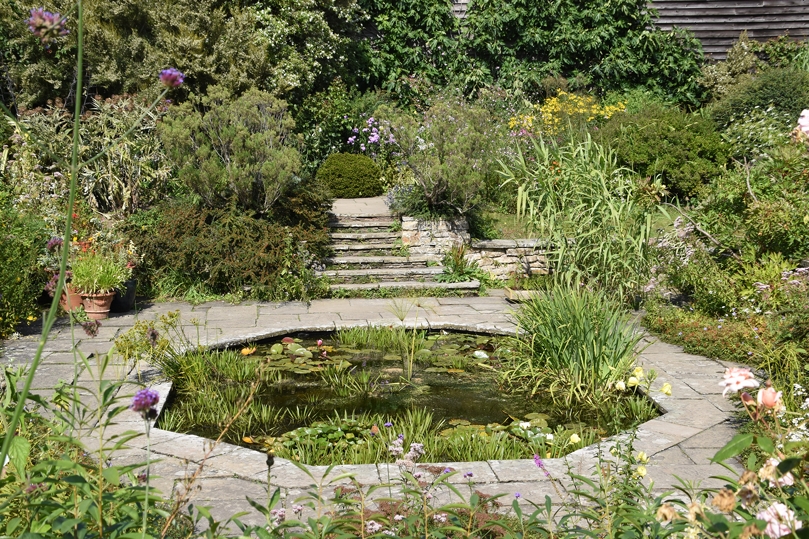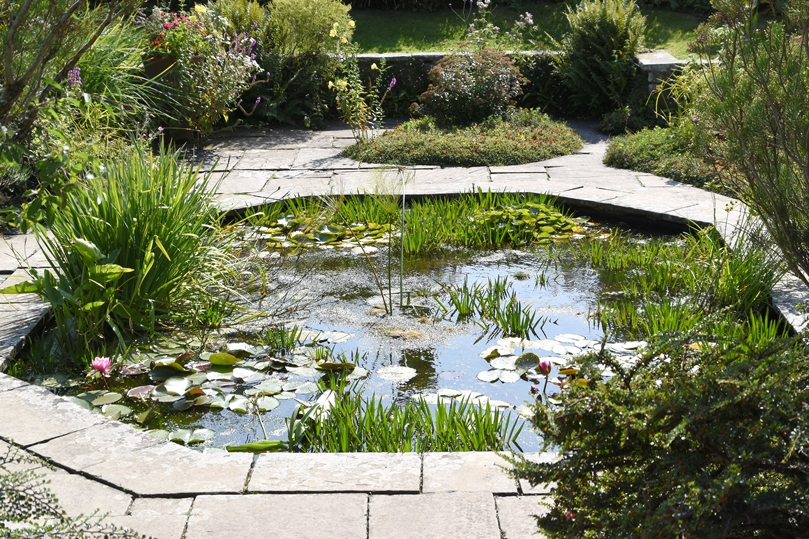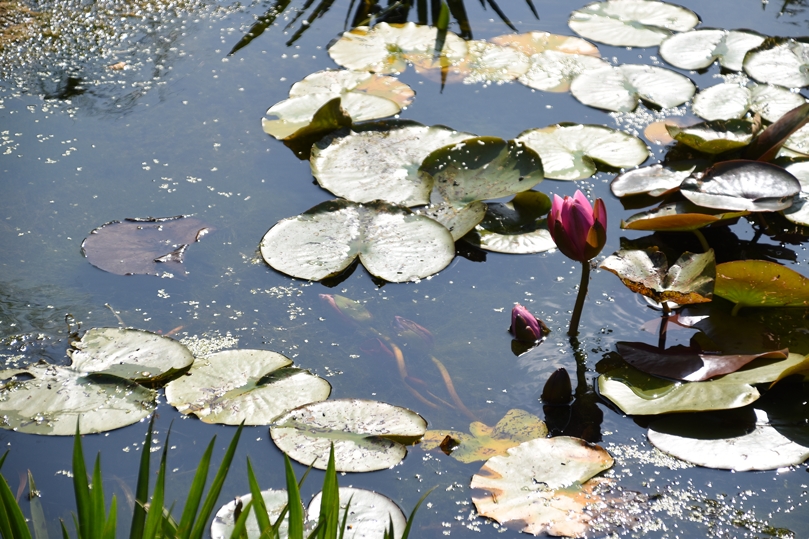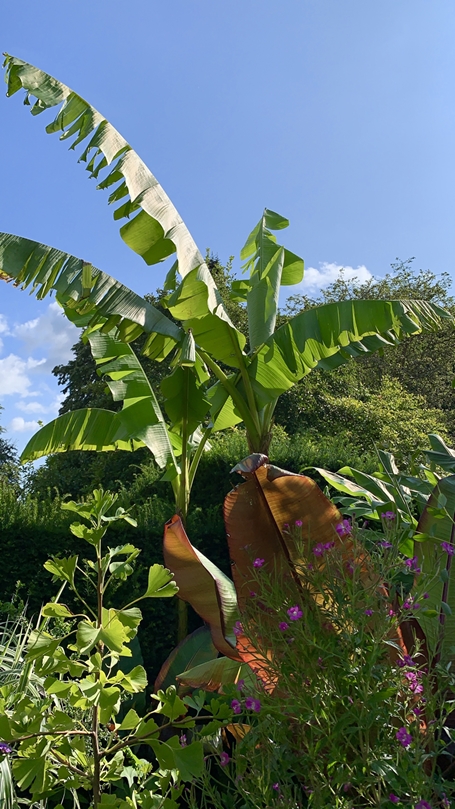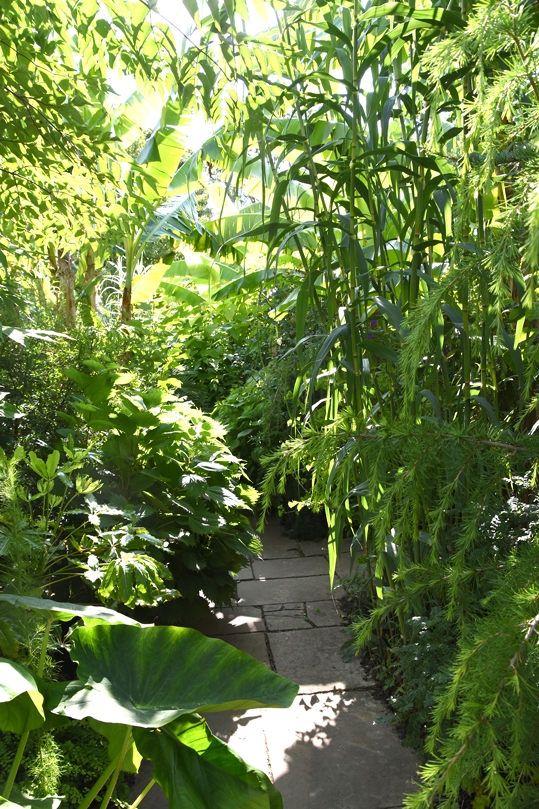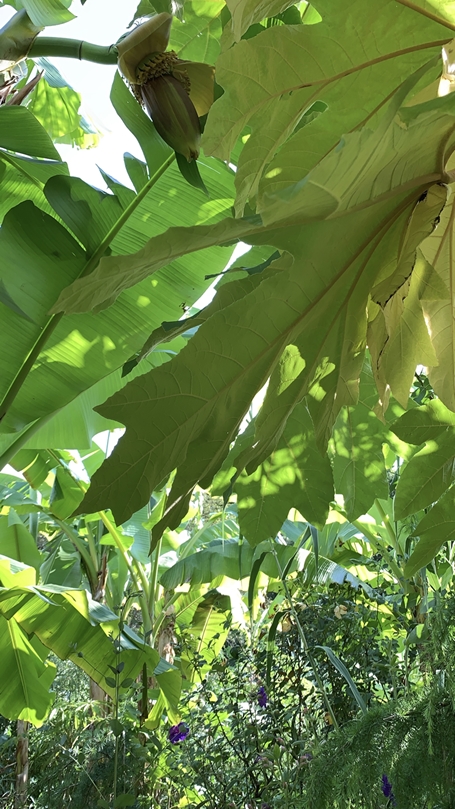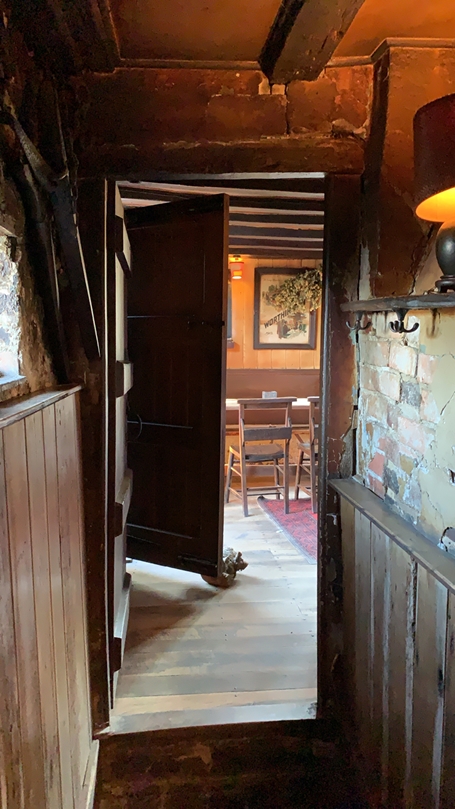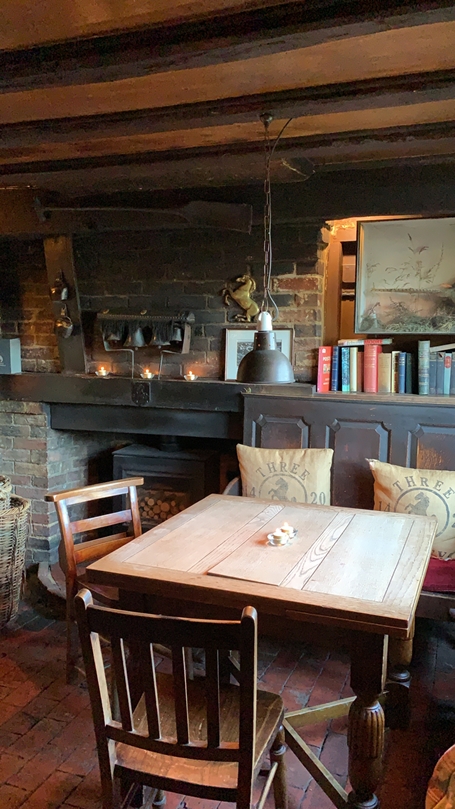Day 4 on the 13th August, less than a week after my previous day out, started as an invite from my sister and husband to go to Great Dixter with them. It’s a favourite garden of ours which I try and visit every year. Given that it’s a fair schlep to Great Dixter, my sister identified three churches that we could visit in the vicinity before lunch. Great Dixter is in Sussex close to the Kent border but the three churches we visited were all in Kent:
St Thomas à Becket, Fairfield (Romney Marsh)
The pretty village of Goudhurst is a Wealdon hill village in Kent.
The church, St Mary The Virgin, sits on top of the hill and is a landmark that can be seen for miles around . Apparently the views on a clear day from the top of the C17 tower over the stunning Kentish Weald are quite impressive (shame the tower wasn’t open when we were there). For this reason it was a major surveying point in the Anglo-French Survey (1784–1790) to measure the precise distance and relationship between the Paris Observatory and the Royal Greenwich Observatory, supervised by General William Roy.
This is a large sandstone church with aisles to the naves and side chapels in the chancel. The church has been altered and restored many times over the centuries.
There are several interesting memorials in the church. One is the spectacular alabaster wall monument of 'Young' Sir Alexander Culpepper (died 1599) erected in 1608 by his son Sir Anthony Culpepper.
The base represents Sir Alexander's 16 grandchildren – 11 boys and 5 girls. Visible at the top is Sir Thomas Culpepper while within the frame below Sir Alexander is depicted kneeling to the right with his son Sir Anthony behind, and Lady Mary opposite.
Another is a memorial to William and Rachel Campion depicted kneeling facing each other with a prayer desk. Figures of their five sons and four daughters are carved on the obelisk pedestals.
Another important monument, in its own bay window, is to 'Old' Sir Alexander Culpepper (died 1537), which is in the form of a lozenge-panelled chest with recumbent wooden effigies set with coloured gesso detail and is one of only about 80 of its kind in the country.
His head rests on his knight's helmet.
The graveyard dates back to C12 and many of the headstones are in poor condition and illegible.
A 20 minute drive took us to the second church, St Mary The Virgin, in the village of Rolvenden. The church is surrounded by some pretty painted houses.
The first church at Rolvenden was recorded in 1090 which was probably a wooden building of Saxon origin. In C12 and C13 they building was replaced by the current stone church, which was then heavily remodelled in C14.
The simple hexagonal font was the gift of the Culpepper and Guildford families and is embellished with their brightly painted coats of arms. Nearby is a holy water stoup from the 15th century.
The most interesting feature of the church, in the south chapel, a squire's pew, or raised gallery which was built for the Gybbons family who owned nearby Hole Park. This is furnished like a domestic room, with carpet, comfortable chairs and a table. From here the squire and his family could look down on everyone while the service was going on!
For some reason I can’t find my pics of the interior of this church. So sorry!
The highlight of the day for me was the next church we visited, St Thomas à Becket, Fairfield (Romney Marsh). Nothing quite prepared me for the magnificent setting of this church standing alone in a field on the Marsh, surrounded by watercourses and sheep & cows. A causeway was built in 1913 but until then the church was more often than not surrounded by water during the winter and spring.
The church is kept locked but you can pick up the key from Becket Barn Farm which is on the opposite side of the road a few hundred yards away.
Fairfield, the village that the church once served has long since disappeared, but the church has survived. It is dedicated to St Thomas à Becket, the Archbishop of Canterbury from 1162 until his murder in 1170. Legend has it that the Archbishop was journeying across the dangerous Romney Marsh when he fell into one of the many watery ditches. He prayed to St.Thomas, as he came up for the second time, for a miracle to save him from drowning. Just in time, a farmer arrived to save him and in gratitude the Archbishop had the little church built and dedicated to St Thomas a Becket.
Around 1200AD a simple structure of a timber frame clad in wattle & daub was built as a temporary measure to provide the local farmers with a place of worship. It then became permanent and the C13 building survived intact until C18 when the entire timber building was encased within brick walls, and the roof covered with heavy red tiles.
Over time the plaster work was replaced with brick including the foundation. However, you can see the beautiful original timber work in the roof frame.
In 1912 the fabric was in a very poor state and a complete rebuilding within the timber framework took place. However, the inside of the church was, fortunately, left untouched and it’s like stepping back into Georgian times, with a three decker pulpit, white box pews with black linings and texts boards staring down at you.
The views from the windows across the marsh are spectacular. I found it hard to tear myself away for this gorgeous little church and the stunningly beautiful marshland.
This iconic church has been used as a filming location, including 2011 BBC adaption of Great Expectations, Great Expectations (2012 film) and Parade's End (TV series).
By now we were starving and it was a 26 minute drive to our lunch destination, the Lime Wharf Cafe, Northiam. It’s in an idyllic setting next to the river Rother where you can hire row boats, canoes and kayaks or take a cruise on the river. The café opened in 2016 and is Scandinavian boat house inspired. The food is excellent and the staff delightful.
We arrived at Great Dixter at 3.30pm (the gardens close at 5pm) which meant that most visitors had left or were already leaving (always the best time to visit gardens and take photos without anyone photo bombing !!).
Great Dixter, an historic house, was the family home of Christopher Lloyd, the celebrated gardener & gardening writer. For 40 years, the garden was his focus and inspired the many books and articles he wrote. Great Dixter is now under the stewardship of Lloyd’s friend and successor, Fergus Garrett, and the Great Dixter Charitable Trust. It’s also a centre of education and a place of pilgrimage for horticulturists from across the world.
The house is at the end of a lane surrounded by farmland and stunning rural views.
The porch and everything to the right is 15th or early 16th-century, while the left hand side of the house, containing service quarters below and bedrooms above, is by Edwin Lutyens. The huge sweep of the tiles roof with its tall chimneys and small dormer windows is the most dramatic element of Lutyens design.
I adore the gardens of Great Dixter and they are a photographer’s dream. I was snapping away on my Nikon D5500 when a lovely gentleman introduced himself as Perry Rodriguez, the business/estate manager of Great Dixter for 26 years. He is so passionate about the house & garden and said the place gets under your skin, hence why he’s been there so long!
The gardens wrap around the house so you have wonderful views of the house from every angle. Apart from a couple of orchards and a few trees there were no gardens here when Christopher Lloyd arrived in 1910. Most of the garden design was by Lutyens. I love it’s fluidity which makes it feel less formal. If you love English gardens, Great Dixter should be on your list of gardens to visit. It’s not far from Sissinghurst so you could visit both gardens in the same day!
The garden is a riot of colour and texture and it seems that there is no planning involved in the planting but that is far from the truth. And I love Lloyd’s attitude to colour which is as inspiring for interior design as it is for exterior design so go and visit the place if you want some inspo for your interiors or are afraid of colour. by the time you leave you won’t have any fear of colour combos!!
No-one can better describe the planting of the garden better than Christopher Lloyds himself (extract from the Great Dixter website):
MIXED BORDERS: “Dixter’s is a high maintenance garden; I make no bones about that. It is effort that brings reward. There are many borders and much work goes into them. Labour saving ground cover is not for me. If you see ground cover, it’s there because, first and foremost, I like it. If it does also save labour, that is an incidental benefit.
The borders are mixed, not herbaceous. I see no point in segregating plants of differing habit or habits. They can all help one another. So you’ll see shrubs, climbers, hardy and tender perennials, annuals and biennials, all growing together and contributing to the overall tapestry.”
COLOURS “I have no segregated colour schemes. In fact, I take it as a challenge to combine every sort of colour effectively. I have a constant awareness of colour and of what I am doing, but if I think a yellow candelabrum of mullein will look good rising from the middle of a quilt of pink phlox, I’ll put it there – or let it put itself there. Many plants in this garden are self-sown and they often provide me with excellent ideas. But I do also have some of my own!”
The garden is link by archways, steps and paths, the latter being either paved or mown in the long grass, wildflower meadow or orchard. I adore a mown path don’t you?!
In the centre of the sunken garden is a beautiful lily pond surrounded by spectacular planting.
The Exotic Garden is a bit of a wild card with a mix of tropical plants like a banana tree and pops of colour from dahlias and cannas.
We stayed until the gardens closed (we were the last to leave!). It was magical sitting by the pond in the sunken garden with just the sound of the birds and surrounded by such beauty. I hope you haven’t been too overwhelmed by the number of images I’ve shared with you!
We had booked a table for an early supper at The Three Chimneys, Biddenden. It was the winner of the Good Pub Guide – County Dining 2019. It’s a beautiful old Kentish building with low ceilings, dark beams and steeped in local history. The food is excellent. A good way to end another day out in the English countryside.

